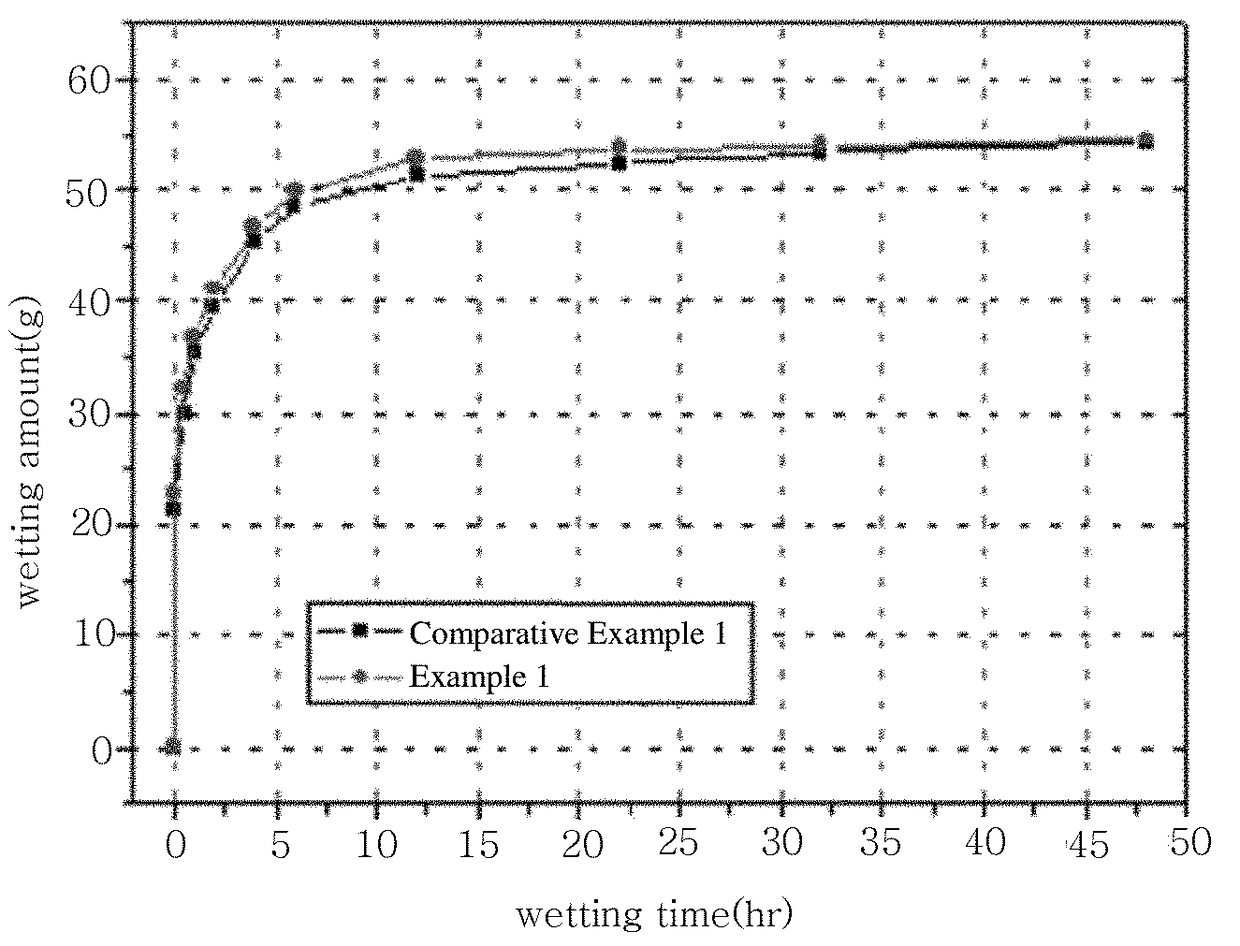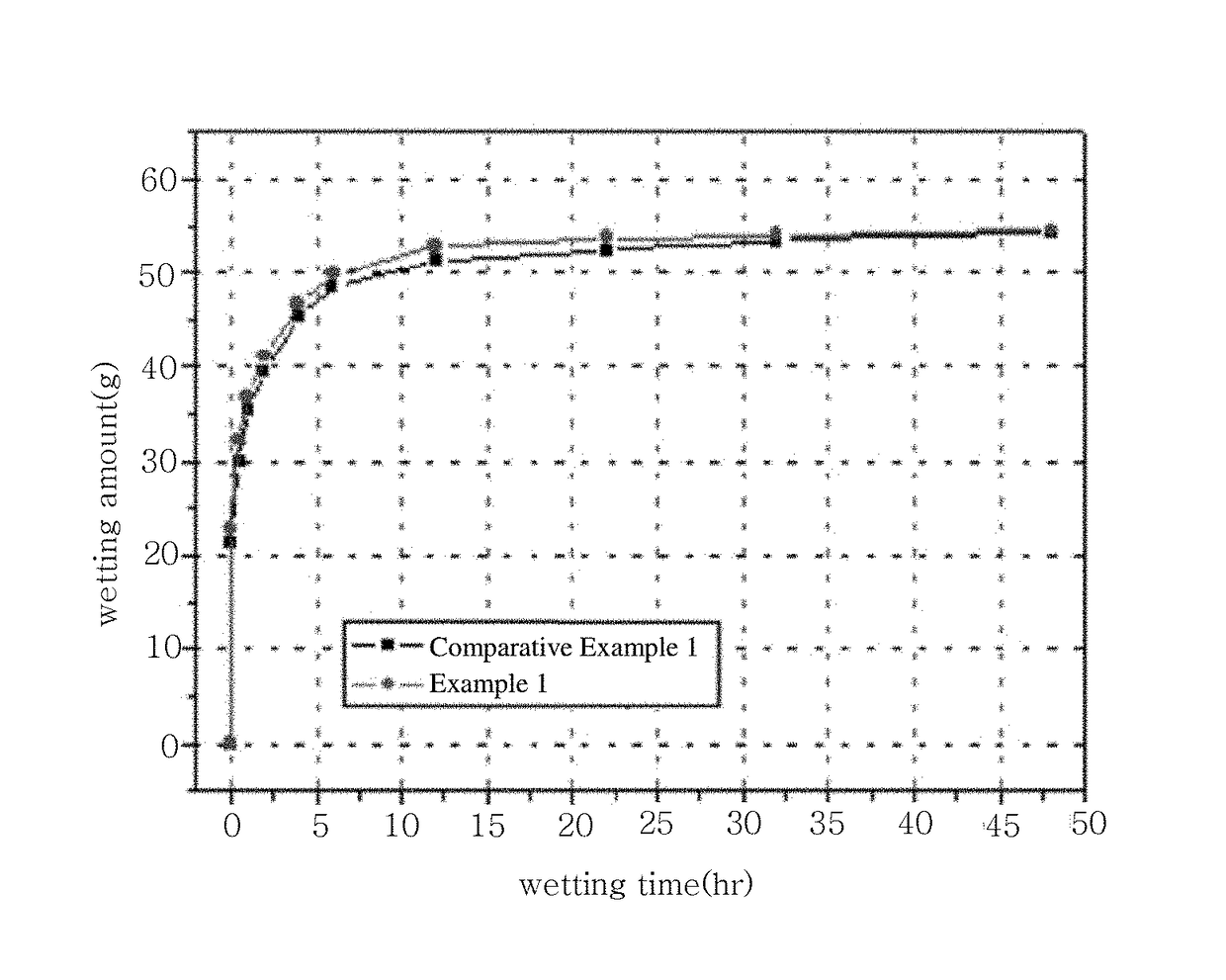Method of manufacturing secondary battery
a secondary battery and battery technology, applied in the direction of batteries, sustainable manufacturing/processing, cell components, etc., can solve the problems of internal short circuit and the like, significant time and a difficult process, and the battery capacity and performance are dramatically reduced
- Summary
- Abstract
- Description
- Claims
- Application Information
AI Technical Summary
Benefits of technology
Problems solved by technology
Method used
Image
Examples
example 1
[0059]A porous separator was interposed between a cathode including a cathode active material and an anode including an anode active material to manufacture an electrode assembly. The electrode assembly was embedded in a battery case and then a non-aqueous lithium electrolytic solution including ethylene carbonate and ethylmethyl carbonate mixed in a volumetric ratio of 3:7 was injected thereinto. Subsequently, vibration having a frequency of 40 kHz was applied thereto, resulting in completion of a secondary battery.
experimental example 1
[0061]In each of Example 1 and Comparative Example 1, the amount of an impregnated electrolytic solution according to time was measured after injecting an electrolytic solution. Results are illustrated in FIG. 1 below.
[0062]In accordance with FIG. 1 below, it can be confirmed that the secondary battery, in which vibration was added to an electrolytic solution, manufactured according to Example 1 exhibits improved electrolytic solution impregnation amount and impregnation rate when compared to the secondary battery, in which vibration was not added to an electrolytic solution, manufactured according to Comparative Example 1.
PUM
| Property | Measurement | Unit |
|---|---|---|
| frequency | aaaaa | aaaaa |
| viscosity | aaaaa | aaaaa |
| viscosity | aaaaa | aaaaa |
Abstract
Description
Claims
Application Information
 Login to View More
Login to View More - R&D
- Intellectual Property
- Life Sciences
- Materials
- Tech Scout
- Unparalleled Data Quality
- Higher Quality Content
- 60% Fewer Hallucinations
Browse by: Latest US Patents, China's latest patents, Technical Efficacy Thesaurus, Application Domain, Technology Topic, Popular Technical Reports.
© 2025 PatSnap. All rights reserved.Legal|Privacy policy|Modern Slavery Act Transparency Statement|Sitemap|About US| Contact US: help@patsnap.com


